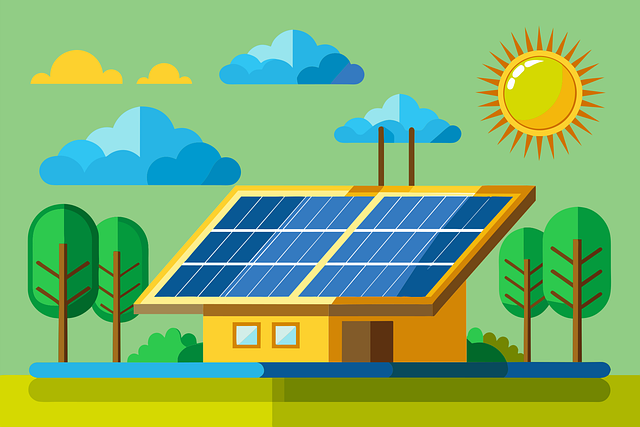“Seamlessly Connect: Unlocking Grid Integration in Multi-Energy Systems for a Sustainable Future.”
Achieving grid integration in a multi-energy system involves the seamless coordination of various energy sources, including electricity, heat, and gas, to optimize energy production, distribution, and consumption. This integration is essential for enhancing energy efficiency, reducing carbon emissions, and ensuring a reliable energy supply. Key strategies include the implementation of advanced energy management systems, the use of smart grid technologies, and the development of flexible energy storage solutions. Additionally, regulatory frameworks and market mechanisms must support the integration of renewable energy sources and facilitate the collaboration between different energy sectors. By leveraging these approaches, stakeholders can create a resilient and sustainable multi-energy system that meets the demands of modern energy consumers.
Strategies for Effective Grid Integration
Achieving effective grid integration in a multi-energy system is a complex yet essential endeavor that requires a multifaceted approach. As the demand for energy continues to rise and the need for sustainable solutions becomes increasingly urgent, integrating various energy sources into a cohesive grid is paramount. One of the primary strategies for effective grid integration is the development of advanced energy management systems. These systems utilize sophisticated algorithms and real-time data analytics to optimize the generation, distribution, and consumption of energy across multiple sources, including renewables, fossil fuels, and energy storage systems. By leveraging these technologies, operators can enhance grid reliability and efficiency while minimizing costs.
In addition to advanced energy management systems, fostering collaboration among stakeholders is crucial. This collaboration should encompass utilities, regulators, technology providers, and consumers. By engaging in open dialogue and sharing insights, stakeholders can identify common goals and develop strategies that align with the broader objectives of energy transition and sustainability. For instance, utilities can work with technology providers to implement smart grid technologies that facilitate better communication and coordination among various energy sources. This collaborative approach not only enhances grid resilience but also encourages innovation, leading to the development of new solutions that can further improve integration.
Moreover, regulatory frameworks play a significant role in facilitating grid integration. Policymakers must create an environment that encourages investment in infrastructure and technology while ensuring that the grid remains accessible and reliable. This can be achieved through incentives for renewable energy adoption, streamlined permitting processes for new projects, and the establishment of clear standards for interconnection. By providing a supportive regulatory landscape, governments can stimulate the growth of multi-energy systems and promote the integration of diverse energy sources.
Another critical strategy involves investing in energy storage solutions. Energy storage technologies, such as batteries and pumped hydro storage, are vital for balancing supply and demand, particularly in systems with high penetration of intermittent renewable energy sources like solar and wind. By storing excess energy generated during peak production times and releasing it during periods of high demand, energy storage systems can help stabilize the grid and enhance its overall reliability. Furthermore, advancements in storage technology are continually improving efficiency and reducing costs, making these solutions increasingly viable for grid integration.
In addition to these strategies, the implementation of demand response programs can significantly enhance grid integration. Demand response involves incentivizing consumers to adjust their energy usage during peak periods or when renewable generation is low. By shifting consumption patterns, demand response programs can alleviate stress on the grid and improve overall efficiency. This not only benefits the grid operators but also empowers consumers to play an active role in energy management, fostering a more sustainable energy ecosystem.
Finally, continuous monitoring and evaluation of grid performance are essential for identifying areas for improvement. By utilizing data analytics and performance metrics, operators can assess the effectiveness of integration strategies and make informed decisions about future investments and enhancements. This iterative process ensures that the grid remains adaptable to changing energy landscapes and technological advancements.
In conclusion, achieving effective grid integration in a multi-energy system requires a comprehensive approach that encompasses advanced energy management systems, stakeholder collaboration, supportive regulatory frameworks, investment in energy storage, demand response programs, and ongoing performance evaluation. By implementing these strategies, we can create a resilient, efficient, and sustainable energy grid that meets the needs of today while preparing for the challenges of tomorrow.
Role of Smart Grids in Multi-Energy Systems

In the evolving landscape of energy systems, the integration of various energy sources into a cohesive framework is becoming increasingly vital. Smart grids play a pivotal role in this integration, serving as the backbone of multi-energy systems. By leveraging advanced technologies and communication networks, smart grids facilitate the seamless interaction between different energy sources, including electricity, gas, and renewables. This interaction is essential for optimizing energy distribution, enhancing reliability, and promoting sustainability.
One of the primary advantages of smart grids is their ability to manage the complexities associated with diverse energy sources. Traditional grids often struggle to accommodate the variability of renewable energy sources, such as solar and wind. However, smart grids utilize real-time data analytics and predictive algorithms to forecast energy production and consumption patterns. This capability allows for better alignment between supply and demand, reducing the risk of outages and ensuring that energy is available when and where it is needed most. Consequently, the integration of renewables becomes more feasible, as smart grids can dynamically adjust to fluctuations in energy generation.
Moreover, smart grids enhance the resilience of multi-energy systems by incorporating decentralized energy resources. In contrast to conventional centralized systems, which rely heavily on large power plants, smart grids enable the deployment of distributed energy resources, such as rooftop solar panels and small-scale wind turbines. This decentralization not only diversifies the energy supply but also empowers consumers to become active participants in the energy market. By allowing consumers to generate, store, and sell their energy, smart grids foster a more participatory energy ecosystem, which can lead to increased energy efficiency and reduced costs.
In addition to facilitating the integration of renewable energy sources, smart grids also support the convergence of different energy carriers. For instance, the coupling of electricity and gas systems can enhance overall system efficiency. Smart grids enable the conversion of excess electricity into hydrogen through electrolysis, which can then be stored and used as a fuel source or converted back into electricity when needed. This flexibility is crucial for balancing the intermittent nature of renewable energy generation and ensuring a stable energy supply.
Furthermore, the implementation of smart grid technologies promotes enhanced communication and coordination among various stakeholders in the energy sector. Utilities, consumers, and energy producers can share information in real time, leading to more informed decision-making and improved operational efficiency. For example, demand response programs can be implemented, allowing consumers to adjust their energy usage based on real-time pricing signals. This not only helps to flatten peak demand but also incentivizes consumers to participate in energy conservation efforts, ultimately leading to a more sustainable energy system.
As we look to the future, the role of smart grids in multi-energy systems will only become more pronounced. The ongoing advancements in digital technologies, such as the Internet of Things (IoT) and artificial intelligence (AI), will further enhance the capabilities of smart grids. These technologies will enable even greater levels of automation and optimization, allowing for more sophisticated energy management strategies. In conclusion, the integration of smart grids into multi-energy systems is essential for achieving a sustainable, resilient, and efficient energy future. By facilitating the seamless interaction of diverse energy sources and promoting active participation from consumers, smart grids are not just a technological advancement; they are a fundamental shift in how we approach energy management in an increasingly complex world.
Challenges in Achieving Grid Integration
Achieving grid integration in a multi-energy system presents a myriad of challenges that must be addressed to ensure a seamless transition to a more sustainable energy future. One of the primary obstacles is the inherent variability of renewable energy sources, such as solar and wind. These sources are dependent on environmental conditions, which can lead to fluctuations in energy generation. Consequently, grid operators face difficulties in maintaining a stable supply of electricity that meets demand. This variability necessitates the development of advanced forecasting techniques and energy management systems that can predict generation patterns and adjust supply accordingly.
Moreover, the existing grid infrastructure often lacks the flexibility required to accommodate the diverse range of energy sources that a multi-energy system entails. Traditional grids were designed primarily for centralized power generation, which does not align well with the decentralized nature of renewable energy. As a result, significant investments in grid modernization are essential. This includes upgrading transmission lines, enhancing energy storage capabilities, and implementing smart grid technologies that facilitate real-time monitoring and control of energy flows. Without these upgrades, the grid may struggle to integrate distributed energy resources effectively.
In addition to infrastructure challenges, regulatory and policy frameworks can hinder the integration process. Many regions still operate under outdated regulations that do not incentivize the adoption of renewable energy or the development of multi-energy systems. This can create barriers for new market entrants and limit the potential for innovative solutions. Policymakers must therefore work collaboratively with industry stakeholders to create a conducive environment that encourages investment in clean energy technologies and supports the transition to a more integrated energy system.
Another significant challenge lies in the coordination among various energy sectors, including electricity, heating, and transportation. Each sector operates under different regulatory regimes and market structures, which can complicate efforts to achieve synergy among them. For instance, the electrification of transportation can lead to increased demand on the grid, necessitating a careful balance between supply and demand across all sectors. To overcome this challenge, integrated planning approaches that consider the interdependencies between sectors are crucial. This requires a holistic view of energy systems, where decisions in one sector are informed by their impacts on others.
Furthermore, the integration of energy storage solutions is vital for addressing the intermittency of renewable energy sources. However, the current market mechanisms often do not adequately value the services provided by energy storage, such as frequency regulation and peak shaving. This lack of economic incentives can deter investment in storage technologies, which are essential for enhancing grid reliability and flexibility. Therefore, it is imperative to develop market structures that recognize and reward the contributions of energy storage to grid stability.
Lastly, public acceptance and stakeholder engagement play a critical role in the successful integration of multi-energy systems. Communities may resist changes to their energy infrastructure due to concerns about environmental impacts, aesthetics, or potential disruptions during the transition. Engaging with stakeholders early in the planning process and addressing their concerns can foster a sense of ownership and support for new initiatives. By prioritizing transparency and collaboration, energy providers can build trust and facilitate smoother integration efforts.
In conclusion, while the challenges in achieving grid integration in a multi-energy system are significant, they are not insurmountable. By addressing variability, modernizing infrastructure, reforming regulatory frameworks, coordinating across sectors, valuing energy storage, and engaging stakeholders, we can pave the way for a more resilient and sustainable energy future.
Case Studies of Successful Multi-Energy Grid Integration
In recent years, the concept of multi-energy systems has gained traction as a viable solution for enhancing grid integration and promoting sustainable energy practices. Various case studies around the globe illustrate the successful implementation of multi-energy grid integration, showcasing innovative approaches and technologies that can serve as models for future projects. One notable example is the integration of renewable energy sources with traditional power systems in Germany. The country has made significant strides in incorporating wind and solar energy into its grid, demonstrating how a diversified energy portfolio can enhance reliability and reduce dependence on fossil fuels. By leveraging advanced forecasting techniques and energy management systems, Germany has been able to balance supply and demand effectively, ensuring that renewable energy is utilized optimally while maintaining grid stability.
Similarly, the city of San Diego in California has embarked on an ambitious journey toward achieving a multi-energy system that integrates solar power, energy storage, and electric vehicle (EV) charging infrastructure. The city’s approach involves not only generating clean energy but also creating a flexible grid that can adapt to fluctuations in energy production and consumption. By deploying smart grid technologies and demand response programs, San Diego has successfully reduced peak demand and improved energy efficiency. This case exemplifies how urban areas can harness local resources to create a resilient energy ecosystem that benefits both consumers and the environment.
In Asia, the island of Jeju in South Korea stands out as a pioneering example of multi-energy integration. The island has implemented a comprehensive strategy that combines wind, solar, and geothermal energy with electric vehicles and hydrogen production. By establishing a microgrid that connects these diverse energy sources, Jeju has enhanced its energy independence and reduced greenhouse gas emissions. The integration of hydrogen as an energy carrier further exemplifies the innovative approaches being adopted in multi-energy systems, as it allows for the storage and transportation of energy in a clean and efficient manner. This case study highlights the importance of policy support and community engagement in driving the transition toward sustainable energy solutions.
Moreover, the European Union has been actively promoting multi-energy systems through various initiatives and funding programs. The Horizon 2020 project, for instance, has supported numerous pilot projects across member states that focus on integrating renewable energy, heating, and transportation sectors. One such project in the Netherlands has successfully demonstrated how district heating systems can be coupled with renewable electricity generation, creating a synergistic effect that enhances overall energy efficiency. By sharing resources and optimizing energy flows, these projects illustrate the potential for multi-energy systems to deliver significant economic and environmental benefits.
As we look to the future, the lessons learned from these case studies underscore the importance of collaboration among stakeholders, including government agencies, private companies, and local communities. The successful integration of multi-energy systems requires not only technological advancements but also a shift in regulatory frameworks and market structures that facilitate innovation. By fostering an environment conducive to experimentation and knowledge sharing, regions can unlock the full potential of multi-energy systems, paving the way for a more sustainable and resilient energy future. Ultimately, these case studies serve as a testament to the feasibility and effectiveness of multi-energy grid integration, providing valuable insights for policymakers and practitioners aiming to navigate the complexities of the energy transition.
Q&A
1. **Question:** What is the first step in achieving grid integration in a multi-energy system?
**Answer:** The first step is to conduct a comprehensive assessment of the existing energy infrastructure and identify the potential for integrating various energy sources, such as electricity, heat, and gas.
2. **Question:** How can demand response strategies facilitate grid integration?
**Answer:** Demand response strategies can facilitate grid integration by adjusting consumer energy usage in response to supply conditions, thereby balancing demand with the availability of renewable energy sources.
3. **Question:** What role do energy storage systems play in multi-energy grid integration?
**Answer:** Energy storage systems play a crucial role by storing excess energy generated during peak production times and releasing it during periods of high demand, thus enhancing reliability and stability of the grid.
4. **Question:** Why is regulatory support important for grid integration in multi-energy systems?
**Answer:** Regulatory support is important because it establishes the necessary frameworks, incentives, and standards that encourage investment in infrastructure and technology needed for effective integration of diverse energy sources.
Conclusion
Achieving grid integration in a multi-energy system requires a comprehensive approach that includes the development of advanced energy management systems, the implementation of smart grid technologies, and the establishment of regulatory frameworks that promote collaboration among various energy sectors. Key strategies involve enhancing the flexibility and reliability of energy sources, optimizing energy storage solutions, and fostering demand-side management. Additionally, integrating renewable energy sources and ensuring interoperability among different energy carriers are crucial. Ultimately, successful grid integration hinges on coordinated efforts among stakeholders, investment in infrastructure, and the adoption of innovative technologies to create a resilient and efficient energy ecosystem.




